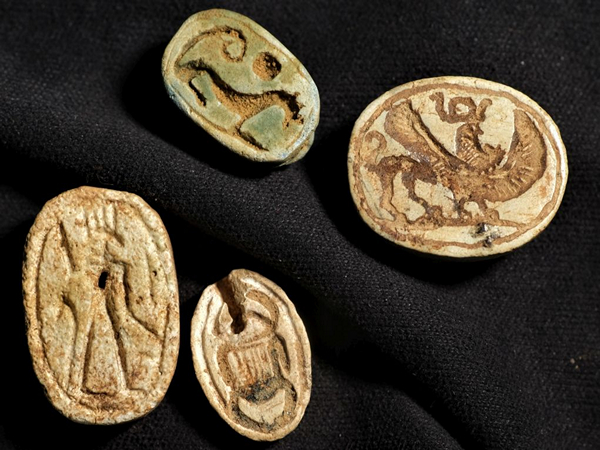Ancient Negev Burial Site Unveils Trade Route Secrets
Archaeologists discovered a 2,500-year-old burial site in Israel's Negev Highlands, revealing ancient trade connections between Yemen, Phoenicia, Egypt, and Europe. The site, rich with artifacts including jewelry and arrowheads, highlights its role as a crossroads and raises questions about caravan purposes and potential human trafficking in ancient times.

- Country:
- Israel
A 2,500-year-old burial site unearthed by archaeologists in the Negev Highlands of Israel has unveiled crucial insights into ancient trade routes linking Yemen, Phoenicia, Egypt, and beyond, as announced by the Israel Antiquities Authority. This newly discovered site, located to the south of Beer-Sheva, contains numerous tombs believed to hold the remains of individuals from caravans that traversed the region, underscoring the Negev's strategic importance as an international trade hub from the 7th to 5th centuries BCE.
The excavation revealed a wealth of artifacts, including copper and silver jewelry, alabaster items for incense preparation, amulets, beads, and vessels likely used for transporting incense resins. Martin David Pasternak, the excavation director, highlighted the discovery's uniqueness and its indication of the vast cultural exchange between southern and northern Arabia, Phoenicia, Egypt, and southern Europe. Also discovered were flint-made arrowheads, a material linked to ancient trade from Yemen and Oman. The ochre traces on these arrowheads suggest potential religious or cultic significance, as explained by Jacob Vardi, an Antiquities Authority specialist in flint tools.
The purpose of these tombs, according to Pasternak, invites intrigue: they could be long-term burial sites for caravans or markers of a caravan that suffered an attack. Despite their remote desert location, the site's position along vital trade routes made it a potential resting place for traders, likely engaged in hauling valuable goods such as frankincense and myrrh, from southern Arabia. Additionally, the findings hint at complex societal interactions among the caravans. Tali Erickson-Gini noted artifacts possibly indicative of women's roles in the trade networks. Ancient texts record the trade of women, and an inscription in Yemen notes the purchase of 30 women from Gaza. Among the burial items was an amulet of the Egyptian god Bes, frequently associated with female and child protection, suggesting many of the deceased might have been women. This raises the possibility of human trafficking, a practice documented in ancient records.
(With inputs from agencies.)
ALSO READ
Greece Bolsters Defense with Major Artillery Purchase from Israel
UPDATE 7-Israel cleared to stay in Eurovision; Spain, Ireland and others quit in protest
UPDATE 8-Israel cleared to stay in Eurovision; Spain, Ireland and others quit in protest
UPDATE 6-Israel cleared to stay in Eurovision; Spain, Ireland and others quit in protest
UPDATE 1-Israel sets 2026 defence budget at $34 billion despite ceasefire in Gaza










